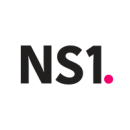When it comes to communicating with engineers about a new project, Xiaoyang Qian always starts out the same way: by discussing the “why.”
“Is it to bring in more business? Shave off manual work? I believe engineers who understand the problem they’re solving can build successful products,” she said.
As a lead product manager at Cadre, a real estate investment platform, Qian prefers to embark on every product launch with a clear vision — an opportunity she believes should also be extended to every engineer involved. It’s not just to create alignment in a product’s creation; it’s to share empowerment.
“During planning, I always ask engineers the things they think should be worked on next, and I value their input,” Qian added.
Creating alignment between product and engineering teams isn’t just in the best interest of engineering teams. It’s also a crucial step in guiding product teams on what’s realistic or possible after brainstorming a potentially thrilling project, as well as instilling a sense of flexibility into the product team’s approach.
“You may have a stellar product idea, but perhaps the dates you need to launch are far too soon to realize the entire product vision,” said Alice Kasper, senior product manager at Teachable. “In these cases, it’s critical to ensure engineering is with you during scoping the ‘in’ and ‘out’ features.”
To learn more about how product leaders and engineering teams are breaking down barriers for increased collaboration, Built In NYC sat down with Qian, Kasper and two other seasoned product experts to learn about the essential components for establishing stronger relationships.

NS1 is a software company designed to unlock the potential of domain name systems (DNS).
As a product manager, what are the key ingredients for a successful relationship with your engineering team?
The key to fostering a partnership culture is letting the engineers feel and know they’re equal stakeholders. Giving the engineering teams a voice in the work that needs to be prioritized alongside feature development is helpful.
For example, a couple of engineers identified a head-of-line blocking issue for the platform and requested for the implementation of a new replication system to be prioritized as a preventative measure. In taking the time to listen and working with them to identify where to queue the work on the roadmap, we learned the benefits of implementing this work are two-fold: to allow for multi-tenancy on the platform, and to save the engineers from being pulled to clear incidents.
This collaborative effort demonstrated that the engineers had a voice. Cultivating a strong support system for the engineers through the good — but more importantly, the bad — is critical. When there is an unexpected defect or an outage, rather than playing the blame game, it’s more helpful if the product managers help to identify a solution or to give engineers air cover to fix the issue.
Describe how your product and engineering teams intersect, and how this organizational structure helps build the relationship between the two.
NS1 employs agile methodologies, so product and engineering teams intersect often. Product is invited to standup meetings and backlog refinements to provide clarification on requirements, offer input when deciding trade-offs and hear requests for prioritizing code optimizations.
Beyond the typical agile ceremonies, our product and engineering teams take part in events that promote community and boost morale in the technical organization. Very recently, I worked with architectural and engineering leaders to organize a two-and-a-half-day hackathon where the engineers could create their own projects, self-organize into teams and vote on which project would receive product prioritization. The product team agreed that they themselves would be barred from voting so that the engineering teams would feel truly empowered. And yet, some teams had both engineers and product managers working together to hack as much as possible.
The synergy and camaraderie were awesome. I ultimately think what is conducive to a thriving relationship between product and engineering is the removal of a hierarchical-like dynamic.
The key to fostering a partnership culture is letting the engineers feel and know they’re equal stakeholders.”
What communication strategies do you use to ensure engineers share your product vision?
Where possible, I try to use visual aids to help communicate my product vision. Most recently, I’ve been partnering with my architect on a virtual mood and vision board. The only text allowed on the board is the name of the product, and everything else is an image. I’ve been testing and socializing the board with a few engineers and it has stimulated engaging conversations and feedback. Eventually, I plan to show the vision board alongside the roadmap and ask the engineers if they feel what has been prioritized is representative of the vision.
I also like to interview architects and engineers in small groups to talk about our product vision and solicit their opinions. I make sure to ask them if what I’m proposing makes sense, but more importantly, I convey how much I value and respect their buy-in. These conversations are not a one-time deal either. I try to sprinkle the end goal in other meetings because repetition will help the vision stick.
It goes without saying how important it is for engineers to share a product manager’s vision. Creativity, consistency, alignment and repetition are most helpful.
MassMutual is a life insurance and financial services company helping customers plan for the future.
As a product manager, what are the key ingredients for a successful relationship with your engineering team?
The three most important ingredients to me are consistent and open communication, a willingness from team members to listen to one another and maintain a learning mindset, and innovation. Team members should make space for challenges, engaging with them and constantly trying to reach solutions.
Describe how your product and engineering teams intersect, and how this organizational structure helps build the relationship between the two.
My engineers are a direct part of my team, which makes it easy to communicate with each other. When it comes to business needs and solutions, our engineers and product managers discuss, discover and find the solution together. It feels a lot like one of those escape room activities where you’re having fun but also facing challenges. You’re all working together on the same mission to achieve customer and market success.
Our engineers and product managers come together to bring home the ‘why’ in our product vision.”
What communication strategies do you use to ensure engineers share your product vision?
We conduct regular design sprints. Our engineers and product managers — along with our customers — come together to bring home the “why” in our product vision. Actions like this help clarify and solidify what we’re working toward. We also take time in the retrospectives and our quarterly program increment meetings to recap the product vision and the strategic priorities of our company and organization. This way, everyone is aligned, driven by the same motivations and working toward the same outcome.
Cadre is a financial technology company connecting investors with commercial real estate opportunities.
As a product manager, what are the key ingredients for a successful relationship with your engineering team?
Keep communication open and frequent. I often go to our engineers and bounce ideas off them. This is helpful for me as a PM because our engineers have a deep sense of ownership over our products and often think of things that I haven’t considered. This helps me refine my roadmap and project plan. It also allows the engineers to understand the business context of projects and further develop their product sense.
I love learning about the technology that we use at Cadre and how certain things are implemented. It helps me stay close to our engineering teams and understand the tradeoffs when building features. It certainly makes communication easier when I can — somewhat — speak their language.
Describe how your product and engineering teams intersect, and how this organizational structure helps build the relationship between the two.
At Cadre, product and engineering teams work very closely together. The product team is responsible for understanding the business and customers, shaping the roadmap and scoping out projects. We ensure that engineering teams are well-informed and actively participate in the roadmap and project planning process.
While we are technically different divisions, we have monthly product design engineering (PDE) meetings where we discuss the latest company updates and PDE news. We usually have a gathering in the office afterward like happy hours or Ping-Pong tournaments — these kinds of events help break down the barrier between roles and make us feel like one team at the end of the day.
I believe that engineers should feel empowered to contribute to the product vision.”
What communication strategies do you use to ensure engineers share your product vision?
I believe that engineers should feel empowered to contribute to the product vision. The best engineers I’ve worked with have strong opinions on how to shape the product. I love sharing business updates and project impacts with the engineering team.
For a recent project we launched, we helped save hundreds of manual hours between our operational teams and investors and brought in sizable investment amounts. This information helped engineers believe in the project they worked on and proactively think about future opportunities.
Teachable is an online platform enabling instructors to easily create an online business and students to enroll in courses.
As a product manager, what are the key ingredients for a successful relationship with your engineering team?
A great relationship between engineering and product boils down to three things: communication, transparency and collaboration.
When a product is in development, meeting with engineering daily in standups and product-based meetings is an important part of being a product manager. I like to reduce meetings as much as possible to avoid using up the engineering team’s time when they could be building the product, but I also find quick syncs to be helpful — especially when they have questions.
Telling engineers they can always DM you is a good idea during development, as it ensures they don’t feel blocked, get stuck or build something when they could have asked you for more context. There are many instances when a PM may not know every single edge case, and making sure engineers know they can rely on you for questions is a good move. You may not have the answers, but you can work with them to identify the pros and cons of various solutions.
In addition to a strong product brief with data and clear scope, being able to add real stories about users is also helpful. Listening to their feedback at each process will also ensure you reduce the likelihood of future blockers.
Describe how your product and engineering teams intersect, and how this organizational structure helps build the relationship between the two.
I think of product and engineering as a joint venture, as both are working together to reach the goal of shipping a product that excites users and gets used by them. The product team should ensure the product is aligned with company goals. From a tech industry perspective, very little — if anything — would be possible without engineering. One could technically build a low- or no-code app but in the end, if you want true innovation, working with engineering is the key.
As a product manager, one of the key parts of the role is to ensure that the engineers know what they’re building and why. The more details that can be provided to engineers in an easy-to-digest format, the better.
Stopping non-critical feature creep, or features that aren’t necessary to meet the required product goals and KPIs, also becomes even more paramount as time goes on during development.
Post-launch, it’s important to keep engineering up to date with findings and data so they know the results of their hard work.”
What communication strategies do you use to ensure engineers share your product vision?
I share user stories and problems ahead of time with engineers of all levels, keeping engineering in the loop on important cross-functional meetings and even adding them as optional attendees if they’re interested. I’ve found it helpful, particularly for engineers who like to be more involved, to know the deeper context about why they’re building features and understand the stakeholder’s perspective.
I join stand-ups and scrum meetings to mitigate blockers and address any lingering questions. I also have near-ship date blocker meetings, which are short meetings where we cover any blocked tickets.
I’ll present in all-hands meetings — not just for engineers, but to ensure the entire company knows what we’re up to as a team. I believe this is motivating because engineering is often doing great work behind the scenes but few people know about it: It keeps people aware, and it can help us gather feedback or identify others in the company who would like to help with the go-to-market launch. Post-launch, it’s important to keep engineering up to date with findings and data so they know the results of their hard work.













